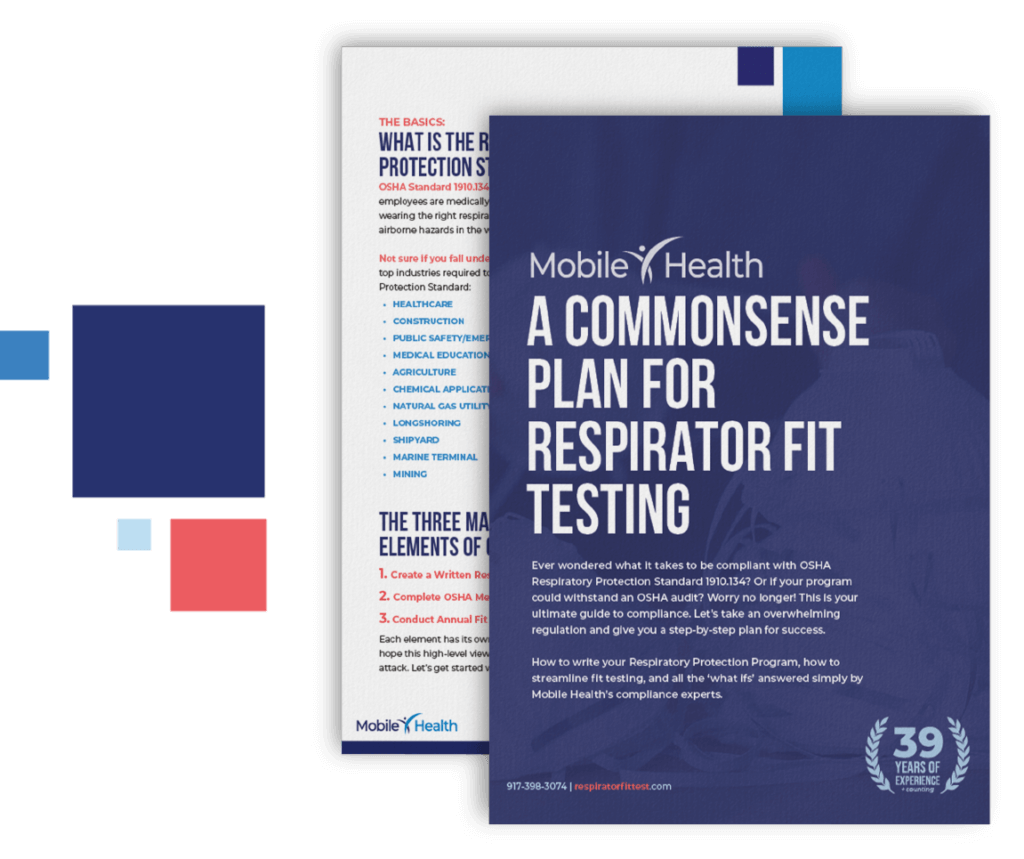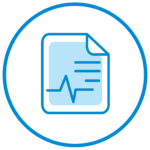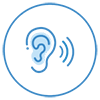ONE-STOP RESPIRATOR FIT TESTING
- Medical Evaluations
- Respirator Fit Tests
- Documentation and Compliant Recordkeeping
Whatever your respirator fit test needs are, we can not only meet them, but also streamline and improve how it’s currently being done. We also offer flexibility and accessibility, benefits that are highly valued when it comes to respirator fit testing.
More importantly, we can create a custom package with only the respirator fit testing services you need, plus any additional pre-employment exams, often saving employees time and your organization money.
For immediate assistance, please call 212-695-5122.
WHY RESPIRATOR FIT TEST WITH MOBILE HEALTH
No other respirator fit testing provider can navigate compliance with the expertise, technology, and experience that we offer.
CLINICAL EXCELLENCE
The clinical excellence that began with our founding in 1984 is the same clinical excellence you will see in every step of the fit testing process. We put our decades of respiratory protection knowledge and experience to work in crafting a perfect fit testing approach for you and your team.
PROVEN EXPERIENCE
We’ve performed respirator fit testing across the country for multi-site construction companies, large hospital networks, Fortune 500 manufacturing companies, and more. We even performed 39,000 fit tests for one single partner. Imagine the efficiency we can bring to your organization!
RESPIRATOR FIT TESTING PORTAL
Our industry-leading Respirator Fit Testing Portal is your one-stop shop for all things respiratory compliance. It offers centralized documentation, comprehensive program overview, and more. It goes beyond any other portal you’ve used to manage fit testing and will streamline your compliance management.
FREE GUIDE TO RESPIRATOR FIT TESTING
This free guide is a commonsense approach to OSHA’s respiratory protection standard and respirator fit testing. It’ll help employers like you navigate compliance with more ease and understanding.

RESPIRATOR FIT TEST METHODS
There are two types of respirator fit testing. Which test your employees need to do will depend on your industry and the airborne hazards they could be exposed to. Specific industries and jobs may also require pulmonary function testing. If you’re not sure which one they need, we can help you figure that out.
QUALITATIVE FIT TESTING (QLFT)
Usable on half-face masks, but not full-face masks, qualitative respirator fit testing determines whether the mask’s seal is adequate based on someone’s ability to NOT taste a test agent.
Types of Respirators for Qualitative Fit Testing
The following half-face masks are suitable for QLFT:
- APR: air-purifying respirators
- FFR: filtering facepiece respirator
- EHMR: elastomeric half-mask respirator
- PFR: particulate filtering respirators
- N (not resistant to oil) 95, 99, 100
- R (somewhat resistant to oil) 95, 99, 100
- P (strongly resistant to oil) 95, 99, 100
- HEPA (high-efficiency particulate air)
QUANTITATIVE FIT TESTING (QNFT)
The only testing option for full-face masks, quantitative respirator fit testing determines how good the mask’s seal is by measuring the amount of leakage into the mask. It can also be used on half-face masks.
Types of Respirators for Quantitative Fit Testing
The following half-face and full-face masks can be used for QNFT:
- Elastomeric full facepiece respirator
- ASR: atmosphere supplying respirators
- SAR: supplied-air respirators
- SCBA: self-contained breathing apparatus
- Combination SAR/SCBA respirators
- APR: air-purifying respirators
- FFR: filtering facepiece respirator
- EHMR: elastomeric half-mask respirator
- PFR: particulate filtering respirators
- N (not resistant to oil) 95, 99, 100
- R (somewhat resistant to oil) 95, 99, 100
- P (strongly resistant to oil) 95, 99, 100
- HEPA (high-efficiency particulate air)
PULMONARY FUNCTION TESTING (PFT)
Pulmonary Function Testing determines how well an employee’s lungs work. Pulmonary Function Testing is required for medical surveillance per OSHA for any employee exposed to asbestos, beryllium, benzene, cadmium, coke oven emissions, cotton dust, formaldehyde, and silica. Additionally, OSHA recommends pulmonary function testing for anyone exposed to other lung hazards, with a physically demanding job, or wearing a respirator for work.

6,500 LOCATIONS NATIONWIDE
More locations means more convenience for your candidates and employees, making hiring and compliance easier.
FIND A CLINIC:
EASIEST ONLINE MEDICAL EVALUATIONS
All employees must complete and pass an OSHA medical evaluation BEFORE taking their respirator fit test. A medical evaluation helps determine someone’s ability to wear a respirator. Mobile Health offers online medical evaluations because of their benefits over paper medical evaluations in the fit testing process.
FIT TESTING OPTIONS
We make respirator fit testing more accessible for you and your employees by delivering our fit test service in three ways. This gives your organization more flexibility to meet and maintain OSHA compliance.

ON-SITE RESPIRATOR FIT TESTING
We can turn any breakroom into a clinic and any job site into a fit testing center. By coming to you, you achieve instant compliance while minimizing work disruption.

IN-CLINIC RESPIRATOR FIT TESTING
With access to our network of 6,500 nationwide clinics, your employees get the convenience of fit testing at a nearby location.

Fit Kit™
A do-it-yourself respirator fit test kit, Fit Kit™ includes everything you need to successfully manage fit testing on your own: the supplies, live training, plus access to the Respirator Fit Testing Portal.
RESPIRATOR FIT TESTING RESOURCES
Respirator fit Testing Faqs
Respirator fit testing is a medical evaluation that measures whether a respirator properly fits an individual’s face and provides adequate protection against airborne hazards. Respirator fit testing may only occur after the employee completes and passes an OSHA medical evaluation.
The Occupational Safety & Health Administration (OSHA) mandates respirator Fit testing at the federal and state levels for most localities. Employees working in a position regulated by OSHA Respirator Standard CFR 1910.134 must have a respirator fit test done at least once a year. The test always takes place before working with a new respirator or after changes in the employee’s facial characteristics. Annual or more frequent tests ensure continuous protection against respirator wear and tear and facial changes.
Respirator fit testing is important for ensuring that employees are protected from airborne hazards in the workplace. A properly fitting respirator significantly reduces the risk of respiratory illness or injury due to exposure to hazardous airborne particles.
Respirator fit testing is required for employees who are required to wear respirators as part of their job duties. This includes employees who work in healthcare, construction, agriculture, mining, chemical application, natural gas, medical education, emergency response, and asbestos abatement, among others.
OSHA requires each respirator wearer to complete a medical evaluation. A Physician or Licensed Healthcare Professional (PLHCP) reviews the completed evaluation to make sure the wearer meets all requirements necessary to wear the respirator. Should a concern arise from the evaluation, the PLHCP will discuss results and recommend appropriate action, depending on medical necessity.
Every employer who falls under OSHA’s Respiratory Protection Standard is also required to create and maintain a respiratory protection plan. Your respiratory protection plan must be written and address these 11 elements:
- Respirator use areas
- Selection of respirators
- Medical evaluations
- Respirator fit testing
- Access to respirators
- Training and education
- Record keeping
- Review and updates
- Emergencies
- Supervision and enforcement
- Communication
Want help creating and managing a successful respiratory protection plan? Check out our Breakdown for Employers or contact us about ways we can support your efforts.
As always, a pregnant woman should consult her physician before any type of exam or activity. However, all clinical research confirms the complete safety of respirator fit testing and that it would not cause any pregnancy complications.
There are two types of respirator fit testing: qualitative and quantitative. Qualitative testing uses the employee’s sense of taste to determine whether a respirator properly fits, while quantitative testing uses specialized equipment to measure the amount of air leaking into the respirator.
Respirator fit testing should be performed annually for employees who wear respirators as part of their job duties. Testing should also be performed whenever an employee changes their respirator model or size, gains or loses more than 20 pounds, or undergoes any facial/cosmetic changes that could affect the fit of the respirator.
Respirators commonly used in the workplace include N95 filtering facepiece respirators, half-facepiece respirators, and full-facepiece respirators.
Respirator fit testing can help ensure that employees are properly protected against hazardous airborne substances, reduce the risk of exposure-related illnesses and injuries, and improve workplace safety.
Respiratory hazards that a fit-tested mask is intended to protect against include, but are not limited to:
- Dust and Fibers: Solid particles formed from the mechanical process.
Examples: lead, asbestos - Fumes: Solid particles that vaporize and condense in cool air.
Examples: welding fumes - Mists: Liquid droplets suspended in the air from spraying operations.
Examples: paint spray mist - Gases: Individual molecules in the air at room temperature.
Examples: carbon monoxide - Vapors: Gaseous substances, normally liquid or solid at room temperature. Examples: solvents
- Biological Hazards: Living organisms that can cause infections.
Examples: viruses, animal waste - Airborne Pathogens: Diseases that can spread through the air.
Examples: Measles, tuberculosis
Respirator fit testing typically takes around 15 minutes per employee.
Respirator fit test results can be highly accurate when conducted properly by trained evaluators using advanced technology.
Different flavored solutions, some sweet and some bitter, are used in qualitative fit testing because some candidates have high sensitivity to flavors or lackluster taste.
If the tester introduces the saccharine solution first during the respirator fit test, and you cannot taste the saccharin, then the tester will introduce the bitter solution. If the candidate cannot taste the bitter solution, the tester should do an additional consult to see if they can introduce another irritant. Alternatively, they might conduct a quantitative fit test to achieve a true outcome.
NOTE: Lack of taste could be a symptom of COVID-19. Consult a physician prior to testing.
No. The respirator they’ve been tested on has passed “inspection.” Not all masks are created equal and not all are appropriate for their facial configuration. OSHA requires that they be fit-tested on EVERY model of mask assigned for work.
Under OSHA regulations, respirator fit tests (RFTs) should be completed annually. That means an employee should be refitted for a respirator every year — or immediately if they require a different respirator. Further, individuals who gain or lose weight, such as during pregnancy, or experience other facial changes, require refitting. Any of these changes can affect proper respirator fit.
Ideally, employees should cycle among several respirators. Handle respirators by their elastic bands only. After removal, the CDC recommends storing each respirator in a paper bag labeled with the date and wearer’s name. That’s because viral matter doesn’t survive as long in a paper environment as it does in other environments. So, each employee should use a respirator for several days, store it in a paper bag, then re-use a previously stored respirator.
Yes. Upon successful completion of the respirator fit test, all passing candidates will receive a clearance card or certificate specifying the respirator make and model for which they have been cleared. This complies with OSHA regulations to provide a copy of results to the candidate to maintain on their person for proof.
Yes, Mobile Health offers customized respirator fit testing solutions and online OSHA medical evaluations that are tailored to each employer’s needs.
The smallest Fit Kit™ includes supplies for 100 respirator fit tests, 25 online medical evaluations, two hoods, two nebulizers, and comprehensive live training for staff.
Reach out to your Mobile Health Account Manager or contact us to get in touch with a Mobile Health representative.











